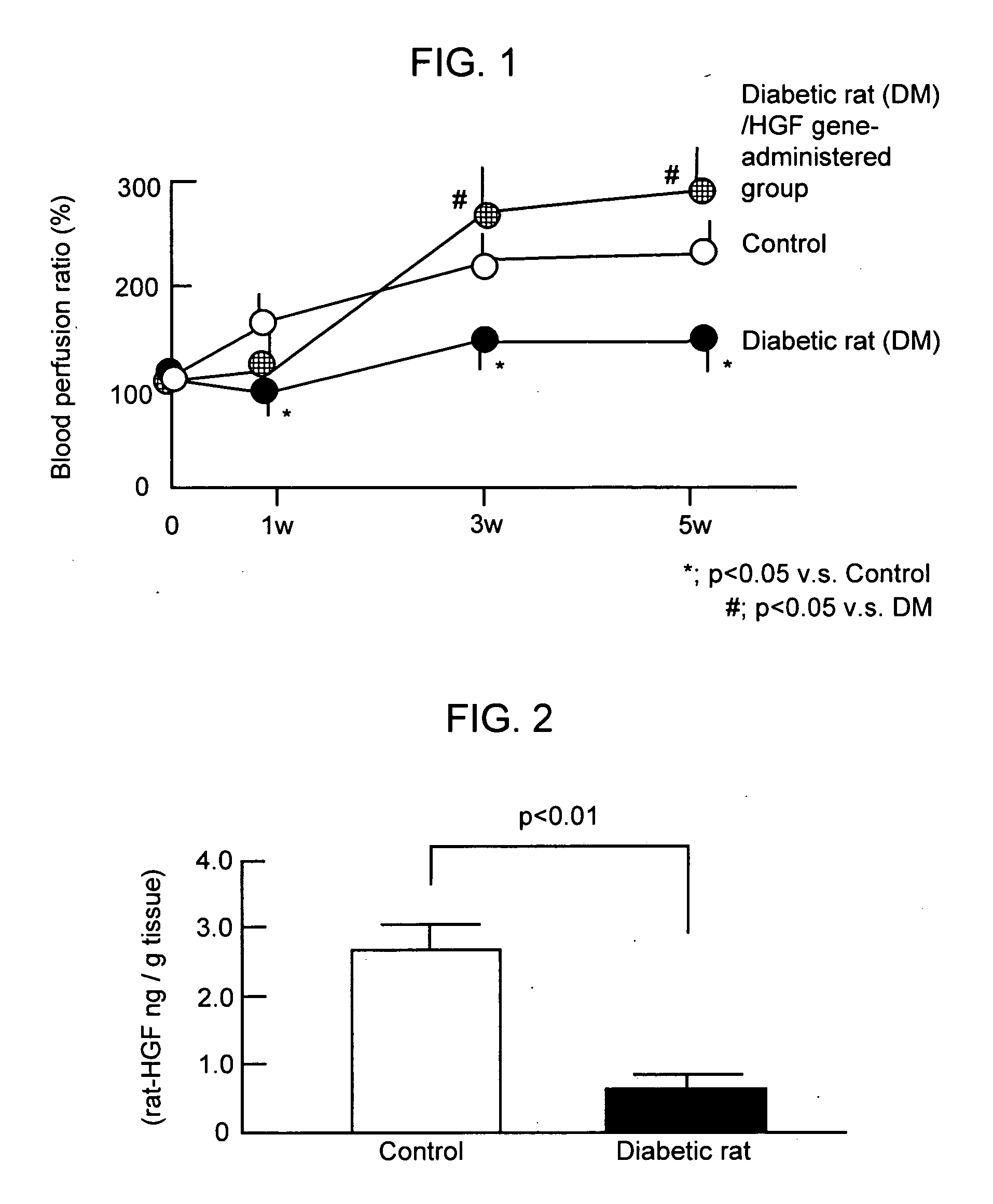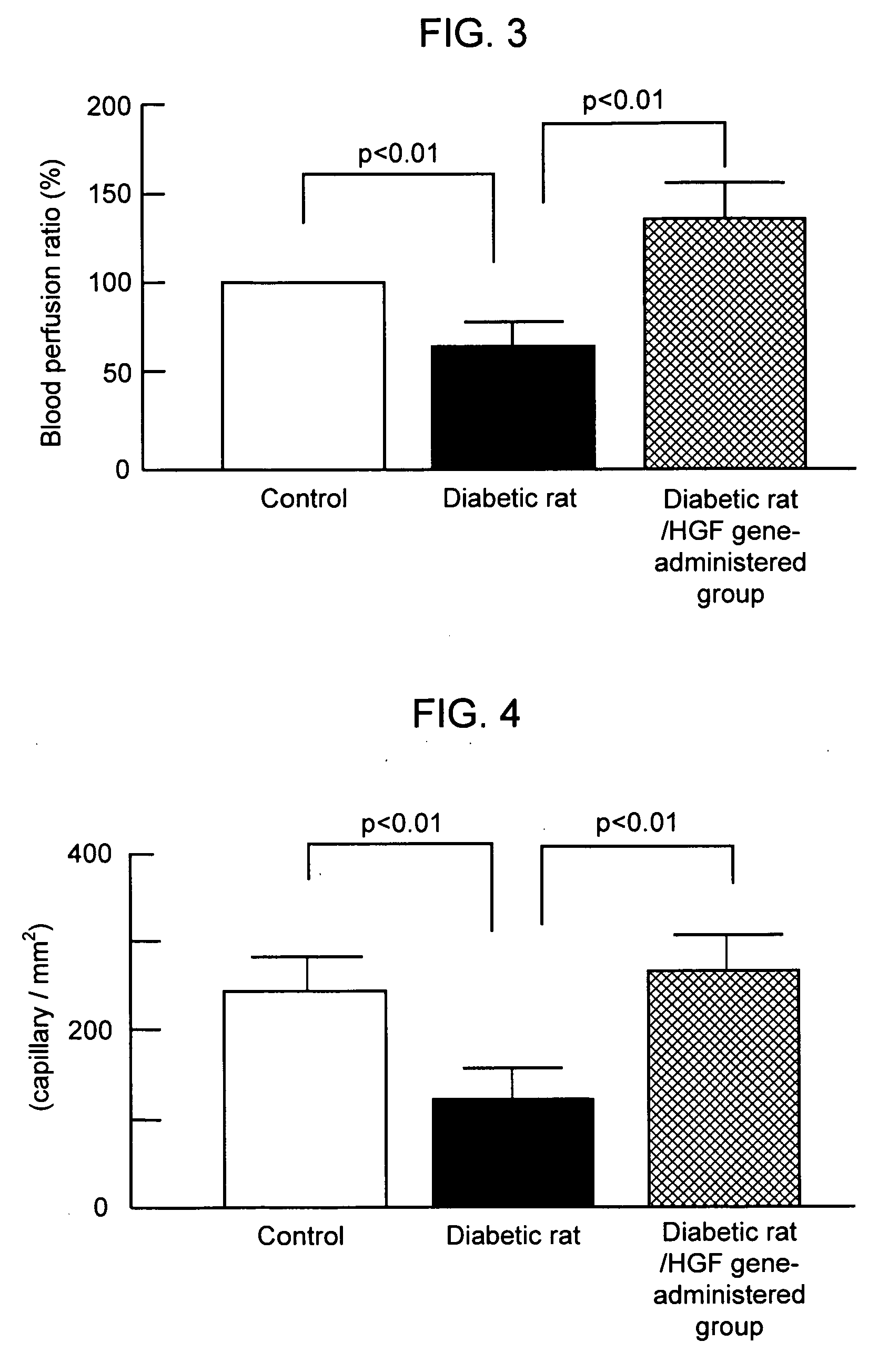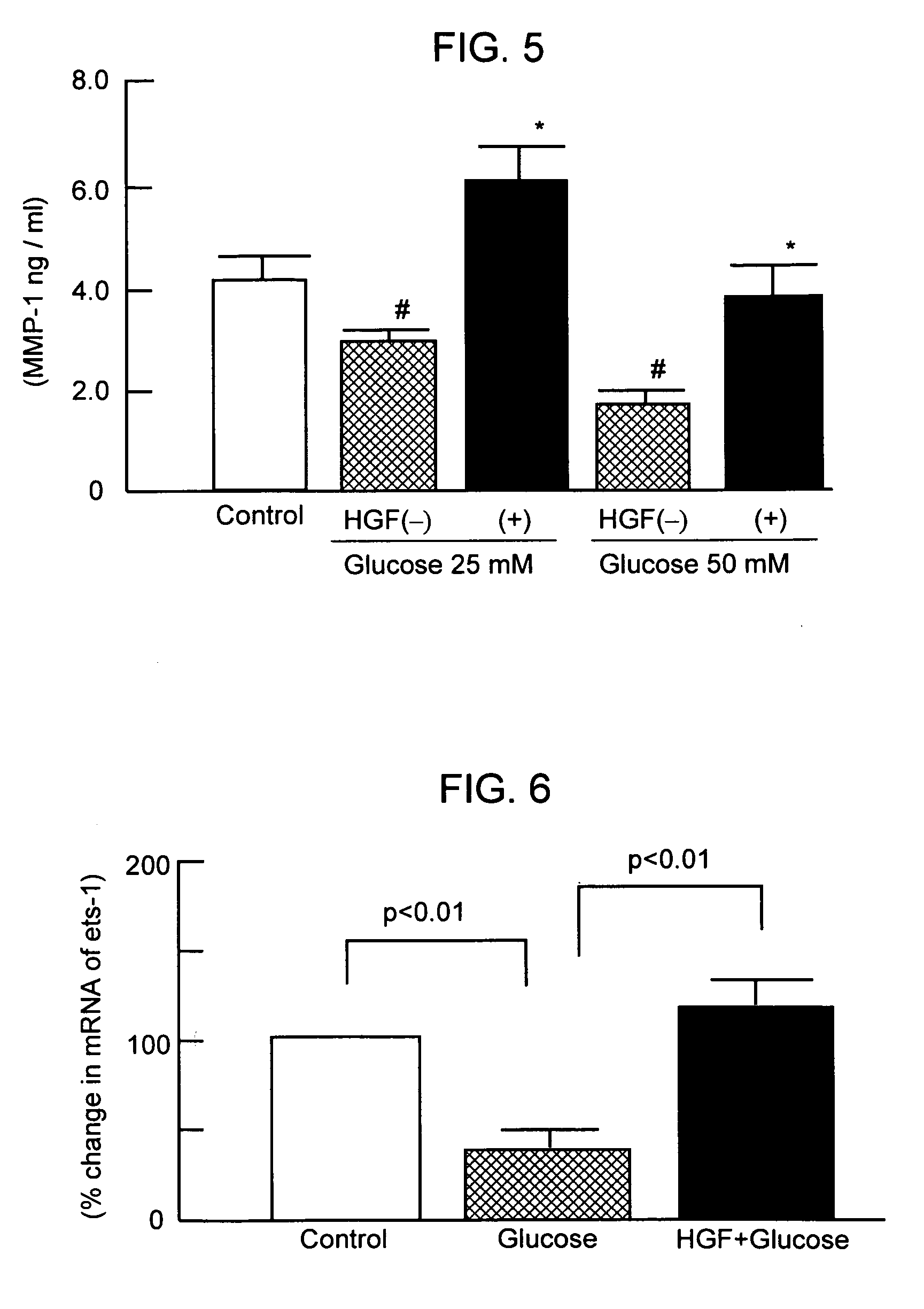Gene therapy for diabetic ischemic disease
a technology of hgf gene and gene therapy method, which is applied in the direction of drug composition, peptide/protein ingredient, metabolic disorder, etc., can solve the problems of unfavorable prognosis and unknown whether the hgf gene is effective toward diabetic ischemic diseas
- Summary
- Abstract
- Description
- Claims
- Application Information
AI Technical Summary
Benefits of technology
Problems solved by technology
Method used
Image
Examples
experiment 1
Effect of HGF Gene Therapy Against Diabetic Lower Limb Ischemic Rat (I)
[0058]Ischemic state in the lower limb site was produced by surgical excision of the femoral artery of one leg of the diabetic rats (6 weeks old; 6 animals per group), to which diabetes was provoked by interperitoneal administration of streptozotocin. After surgical excision of the femoral artery, infusion of HVJ-liposome preparation containing HGF gene (50 rig) was injected into the muscle of the lower limb ischemic site.
[0059]After 3 weeks, the perfusion ratio of the ischemic site was measured by laser Doppler imager. The perfusion ratio of the ischemic site of the diabetic lower limb ischemic rat, to which HGF gene was administered, showed significant increase compared to that of the control lower limb ischemic rat or that of the diabetic lower limb ischemic rat above with no administration.
[0060]Taking perfusion ration of the control lower limb ischemic rat as 100%, that of the HGF gene untreated diabetic low...
experiment 2
Effect of HGF Gene Therapy Against Diabetic Lower Limb Ischemic Rat (II)
[0061]Diabetic lower ischemic rat and control lower limb ischemic rat treated as above were prepared and subjected to HGF gene therapy. 5 weeks later, the skeletal muscle of the lower limb ischemic site was taken from each animal, subjected to ALP staining and the blood vessel count per unit area was compared. The blood vessel count of HGF gene untreated diabetic lower limb ischemic rat was significantly smaller as that of the control lower limb ischemic rat, and that of the HGF administered diabetic lower limb ischemic rat was significantly increased. The results are shown in FIG. 4.
Reference 2
[0062]Influence of Glucose Concentration and HGF Addition Against MMP-1 Production of the Angioendothelial Cell
[0063]The angioendothelial cells (derived from human aorta) were cultured in three types of serum free medium containing glucose at a concentration of 0, 25 mM and 50 mM, respectively. After 24 hours of cultivati...
PUM
| Property | Measurement | Unit |
|---|---|---|
| Mass | aaaaa | aaaaa |
| Mass | aaaaa | aaaaa |
| Time | aaaaa | aaaaa |
Abstract
Description
Claims
Application Information
 Login to View More
Login to View More - R&D
- Intellectual Property
- Life Sciences
- Materials
- Tech Scout
- Unparalleled Data Quality
- Higher Quality Content
- 60% Fewer Hallucinations
Browse by: Latest US Patents, China's latest patents, Technical Efficacy Thesaurus, Application Domain, Technology Topic, Popular Technical Reports.
© 2025 PatSnap. All rights reserved.Legal|Privacy policy|Modern Slavery Act Transparency Statement|Sitemap|About US| Contact US: help@patsnap.com



